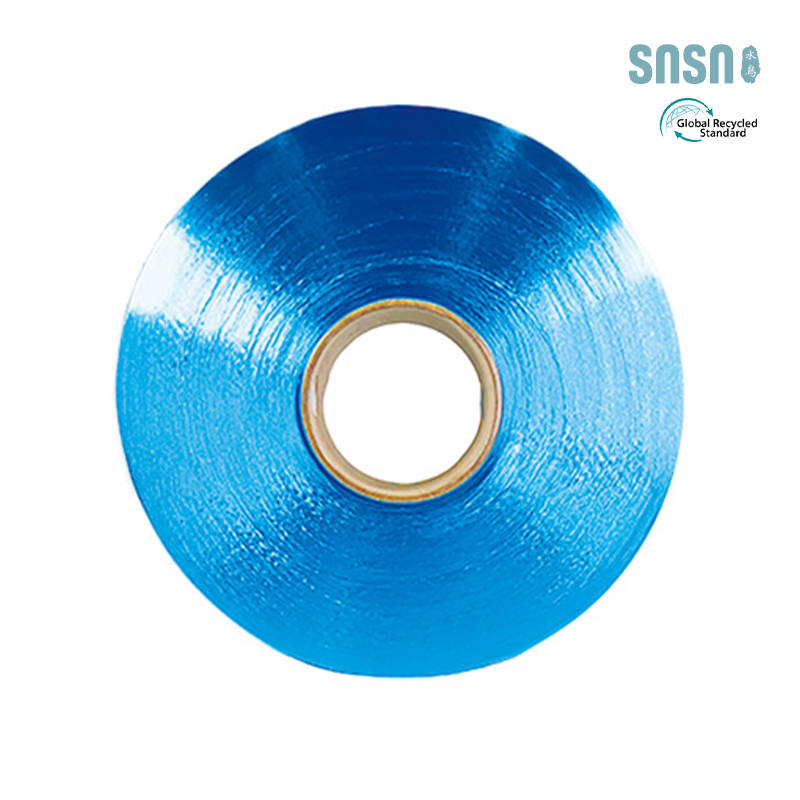Partially oriented yarn (POY) is a crucial material in the textile industry, serving as the foundation for many synthetic fabrics. This comprehensive guide will explain everything you need to know about POY yarn, including its production, characteristics, advantages, and common applications.
Understanding Partially Oriented Yarn
Partially oriented yarn, commonly referred to as POY, is a type of synthetic yarn that has undergone partial molecular orientation during the manufacturing process. This intermediate product is later drawn to create fully oriented yarn for various textile applications.
POY is primarily made from:
- Polyester
- Nylon
- Polypropylene
How Partially Oriented Yarn Is Manufactured
The production of POY involves several precise steps:
| Production Stage | Description | Temperature Range |
| Polymerization | Raw materials are melted and combined | 260-300°C |
| Spinning | Molten polymer is extruded through spinnerets | 280-290°C |
| Quenching | Filaments are cooled rapidly | 15-25°C |
| Orientation | Partial molecular alignment occurs | Room temperature |
| Winding | Yarn is wound onto bobbins | Room temperature |
Key Properties of Partially Oriented Yarn
POY possesses unique characteristics that make it valuable for textile production:
| Property | Description | Importance |
| Tenacity | 3-4 g/denier | Provides adequate strength for processing |
| Elongation | 80-150% | Allows for further drawing |
| Thermal stability | Good resistance to heat | Essential for dyeing processes |
| Dye affinity | Moderate absorption | Enhances color options |
Advantages of Using Partially Oriented Yarn
Textile manufacturers prefer POY for several reasons:
- Cost-effective production: POY serves as an economical intermediate product
- Processing flexibility: Can be drawn to various specifications
- Quality consistency: Produces uniform end products
- Energy efficiency: Requires less energy than fully oriented yarn production
- Storage stability: Maintains properties well during storage
Common Applications of Partially Oriented Yarn
POY finds use in numerous textile products:
| Application | End Product | Market Segment |
| Weaving | Apparel fabrics | Fashion clothing |
| Knitting | Sportswear | Athletic apparel |
| Texturizing | Upholstery fabrics | Home furnishings |
| Industrial uses | Technical textiles | Automotive, medical |
Comparing Partially Oriented Yarn to Other Yarn Types
Understanding how POY differs from other yarn forms helps in material selection:
| Yarn Type | Orientation Level | Typical Uses | Processing Requirements |
| Partially Oriented Yarn (POY) | Partial | Intermediate product | Requires drawing |
| Fully Oriented Yarn (FOY) | Complete | Final textile products | Ready for use |
| Draw Textured Yarn (DTY) | Complete | Textured fabrics | Requires texturizing |
Processing Partially Oriented Yarn Into Finished Products
Converting POY into usable textile materials involves several steps:
- Drawing: The yarn is stretched to align molecules completely
- Texturizing (optional): Creates bulk and texture
- Twisting: Adds strength and cohesion
- Heat setting: Stabilizes the yarn structure
- Dyeing: Adds color as required
Quality Control Measures for Partially Oriented Yarn
Manufacturers implement strict quality checks for POY:
- Regular denier checks to ensure consistent thickness
- Tensile strength testing for quality assurance
- Elongation measurements to verify processing capability
- Evenness testing to detect any irregularities
- Thermal stability assessments for dyeing suitability
Storage and Handling Recommendations
Proper care ensures POY maintains its quality:
| Factor | Recommended Condition | Reason |
| Temperature | 20-25°C | Prevents thermal degradation |
| Humidity | 60-65% RH | Maintains optimal moisture content |
| Light exposure | Minimal | Prevents UV damage |
| Storage duration | ≤6 months | Ensures best performance |
Future Trends in Partially Oriented Yarn Technology
The POY sector continues to evolve with new developments:
- Eco-friendly production methods reducing environmental impact
- Enhanced dyeability for brighter, longer-lasting colors
- Improved strength-to-weight ratios for technical applications
- Smart yarn integration with conductive properties
- Nanotechnology applications for specialized functions
Frequently Asked Questions About Partially Oriented Yarn
Q: Can partially oriented yarn be used directly in textiles?
A: No, POY requires additional drawing or texturizing before use in final products.
Q: How does humidity affect POY quality?
A: Excessive humidity can cause moisture absorption, while low humidity may lead to static issues.
Q: What's the shelf life of POY?
A: When stored properly, POY maintains good quality for about 6 months.
Q: Is POY suitable for all textile applications?
A: While versatile, POY is primarily used for synthetic fabrics and may not be ideal for natural fiber applications.
Q: How is POY different from FDY?
A: Fully drawn yarn (FDY) has complete molecular orientation and is ready for use, while POY requires additional processing.
Conclusion
Partially oriented yarn plays a vital role in modern textile manufacturing, offering a balance between processing efficiency and final product quality. Understanding its properties, production methods, and applications helps textile professionals make informed material choices. As technology advances, POY continues to evolve, offering new possibilities for innovative fabric development while maintaining its position as a cost-effective solution for mass textile production.

 English
English عربى
عربى Türk
Türk Español
Español




















